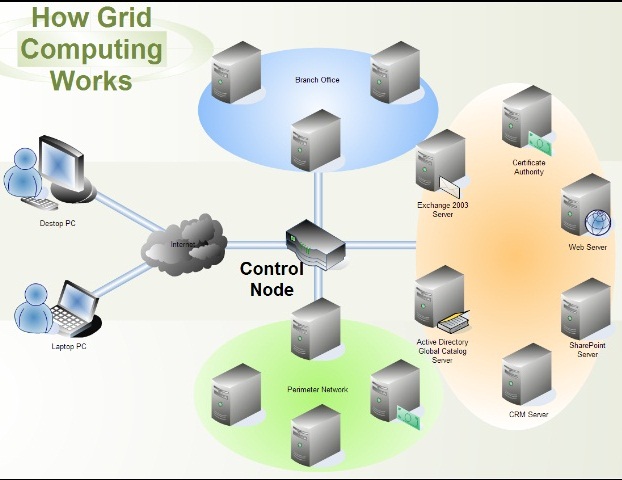What is Grid Computing – Definition
Grid computing is a group of computers physically connected (over a network or with Internet) to perform a dedicated tasks together, such as analyzing e-commerce data and solve a complex problem. Grids are a form of “super virtual computer” that solve a particular application. The grid size may vary from small to large enterprises network.
A computing grid is constructed with the help of grid middle ware software that allows them to communicate. middle ware is used to translates one node information passed stored or processed information to another into a recognizable format. It is the form of “distributed computing” or “peer-to-peer computing”.
‘Grid computing’ is distinguished from the cluster computing, because in Grid computing each node has heterogeneous and geographically dispersed (such as a WAN) and its own resource manager and perform a different task and are loosely connected by the Internet or low-speed networks, but in cluster computing resources are managed in a single location (Like a LAN).
Grid Computing

The grid computing model is a special kind of cost-effective distributed computing. In distributed computing, resources are shared by same network computers. In grid computing architecture, every computer in network turning into a powerful supercomputer that access to enormous processing power, memory and data storage capacity.
Grid computing solve Challenging problems such as earthquake simulation and weather modeling. Grids computing is a way of using resources optimally inside an organization.
Grid architecture can also be used for load balancing and and redundant network connections. This Model use parallel processing software that divide a program among the many thousand computers and Collect and combine the results into a single solution. For the security reasons, grid computing is restricted within the same organization.
Grid computing can be used in a large Networks where thousands of machines sit idle at any given moment.
Even when a user is reading, it constitutes idle time. These idle power
of computers can be used for large computational problems, these
technique is running in the background that is known as cycle-scavenging.
SETI@home
(“SETI at home”) is an another example of grid computing project
created by the Berkeley SETI Research Center at Space Sciences
Laboratory in University of California, Berkeley. In the SETI Research
Center thousands of machines searching for signs of extraterrestrial
intelligence.
Comments